- Retrofit
- Posted
Social Capital
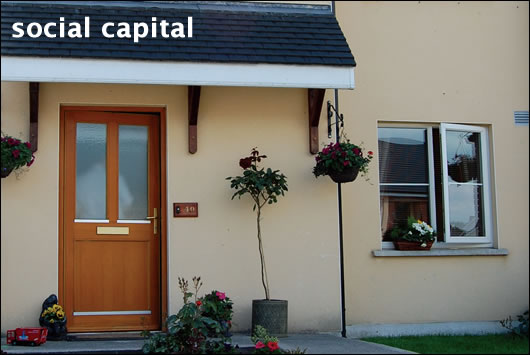
Local authorities upgraded hundreds of houses last year under a €20m government scheme, and the Department of Environment has doubled funding for 2010. With local energy agencies playing a key role on the ground, the programme offers vital lessons for keeping quality high in energy retrofit schemes. Words: Lenny Antonelli
Doreen Donohoe moved to her new home – a bungalow in the village of Rathoe, north Carlow – in the spring. Built in 1972 and owned by Carlow County Council, the house was given a complete energy makeover before she arrived – the walls and attic were insulated, air leaks were sealed and a new heating system installed.
The council upgraded the house under the first year of a Department of Environment fund – awkwardly titled the Retrofitting of Insulation and Other Energy Efficiency Measures Programme – that aimed to improve the energy efficiency of empty local authority housing. The €20m scheme required upgraded dwellings to get at least a C1 building energy rating (BER) – if they did the local authority was entitled to 75% of costs per house up to a max of €15,000.
In Rathoe, Donohoe’s cavity walls were pumped with platinum bead, while fibreglass insulation in the attic was topped up to 300mm. With no gas network in most of Carlow, the house is now heated by a new condensing oil boiler – a Firebird Heating Solutions Enviromax Heatpac C26kW unit that’s certified by SEAI's Harp database to have a seasonal efficiency of 94.8%.
Donohoe sets her desired temperature in each zone with thermostats, and the boiler knocks off automatically once the temperature she wants is reached. Weather compensation further boosts the boiler's efficiency.
Donohoe's heating system is split into two zones – water and space. While two-storey houses were split into two space heating zones under the scheme, bungalows were kept as one. An Oisin solid multi-fuel stove from Waterford Stanley was installed too – the unit has an efficiency of up to 77.9%, the company says. “Just a briquette and a couple of bits of coal and it gets unbelievably warm,” Donohoe says of the stove.
The house was sealed for airtightness too: work focused around doors, windows, service cavities and the attic hatch. A blower door test produced a respectable result of 5.6 m3/hr/m2 at 50 Pa.
CFL bulbs were also installed throughout the house. While local authorities don't typically provide lightbulbs to tenants, they were useful in getting closer to the C1 rating.
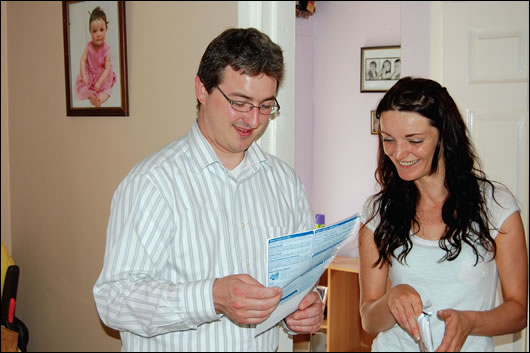
Doreen Donohoe examines her energy bills with Rory McConnon of Carlow Kilkenny Energy Agency in her upgraded home
Donohoe also bought AAA rated kitchen appliances when she moved in. "They're a little bit extra, but you get it back in your bills," she says. Combined with the CFLs, the appliances keep the house's electricity use low. When Construct Ireland visited, an electricity monitor on the wall put daily average use at €1.43, but Donohoe says it's typically around 85c.
The renovation boosted the bungalow's BER from a D2 to a C1. The measures undertaken at Donohoe’s house were replicated across 14 houses in Carlow – all had their cavities pumped with platinum bead and attic insulation brought up to 300mm with fibreglass.
Firebird Enviromax boilers were installed in each house along with weather composition and heating controls, as well as Waterford Stanley solid multi-fuel stoves. Every house got CFLs and an electricity monitor too, while any recess lights were replaced with LEDs.
Ventilation was upgraded too: fixed hole-in-the-wall-vents were fitted with controllable 'hit and miss’ covers inside. "That's a very simple measure and it makes a significant improvement to the BER," says Rory McConnon of Carlow Kilkenny Energy Agency (CKEA), energy consultants and assessors on the project in the county. The houses were sealed for airtightness too using proprietary airtightness tapes such as Siga and Intello, with particular attention paid to doors and windows, service junctions, recess lights and attic hatches.
Not all houses were subjected to blower door tests though – CKEA only sought tests if the houses were struggling to hit the C1 mark, otherwise they entered the default value of 10 m3/hr/m2 when calculating BERs. "I'd say the best you'd get is about a 10% improvement [in BER] between the default and the airtightness result you'd get on a properly sealed house," McConnon says.
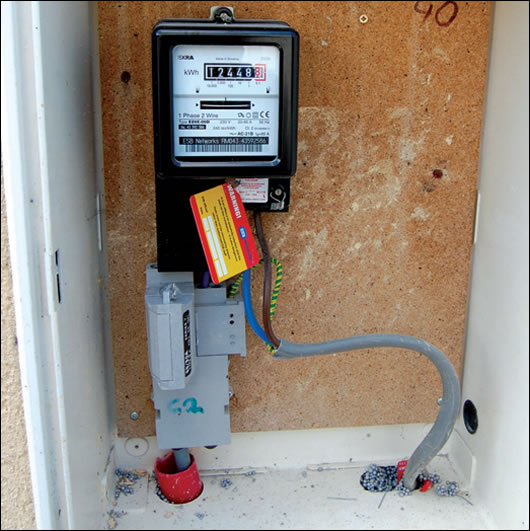
Opening the ESB meter box is a good way to see if a cavity wall has been pump-filled – the insulation can be spotted in the cavity at the bottom
Mark Shirley of BER assessors 2eva.ie conducted the blower door tests. On the first few houses Shirley did initial tests before any sealing was done, but he says this wasn't necessary after the first few houses as the contractor "adopted a methodology of work" that allowed them to catch major leaks. He says the builders "got quite exercised about what the results were, which was great to see…the important thing to note is that the tenants will have significantly improved comfort – less draughts, less mold, less moisture ingress."
Of all Shirley’s tests, the worst result – 6.4 m3/hr/m2 – was for a house built in 2004, while the best two – 2.0 m3/hr/m2 and 1.8 m3/hr/m2 – were for houses built in 1980 and 1985 respectively. "I think that's possibly an indication that building quality standards slipped during the early 2000s,” he says.
Shirley explains that while contractors once employed all their own tradesmen, a preference for hiring sub-contractors emerged in the noughties. This led to a decline in standards, he believes, as busy sub-contractors who weren't responsible for the overall quality of a project sought to finish jobs quickly.

One of the drilling holes through which Donal O'Sullivan's cavity walls were pumped-filled with platinum bead
Before visiting Doreen Donohoe’s house, Construct Ireland stopped by the home of Donal O'Sullivan and his family in Bagenalstown, west Carlow, which was also upgraded under the scheme. Donal and his wife Sharon reckon they've used plenty of oil since moving into the semi-detached house last September – but only by comparison to the smaller terraced home they had before. "We find it hard to gauge whether it's economical," Sharon says.
"This house is lovely and warm, don't get me wrong," she says. "It's great the fact that [the heating] will kick in itself. If you go away and come back the house is at a lovely, constant nice warm temperature."
O'Sullivan says his digital heating controls take a bit of getting used to. "There was a leaflet on it when we moved in here, but in fairness you couldn't follow the bloody leaflet. If a fellow was educated on it and spent time regulating it he would get a house that would be just perfect," he says. Rory McConnon says he would like to find – or even create – analogue heating controls that can control multiple zones for homeowners uncomfortable with digital controls.
No blower door test was done on O'Sullivan's house, but the upgrade boosted the BER from a D2 to a B2. McConnon would like to see some exceptions made to the scheme’s C1 requirement – such as for small bungalows that struggle to get to a C1 because of their large exposed surface area, and the bigger proportion of that area taken up by windows. Specifically, he thinks houses that can’t get to the C1 – but that can register an “equivalent improvement” in their BER – should qualify.
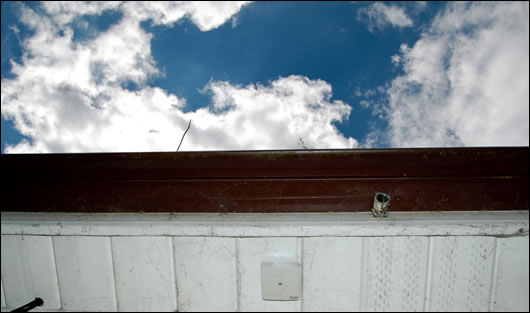
Weather sensors feed into weather compensation systems that help to boost the efficiency of all houses upgraded under the scheme in Carlow
Up to 30 local authority houses become vacant in Carlow each year, and Tim Butler, senior executive officer at the county council, points out that it’s obviously easier to upgrade empty rather than occupied housing – particularly as some repair work is usually needed on vacant dwellings anyway.
"It's been a very worthwhile exercise from the point of view of best practice," Butler says of the scheme. "It's a great learning experience to have gone through the process."
Nationwide, the programme led to the upgrade of 750 houses last year. Every local authority in the country was given an allocation of funds – though not all made use of it – based on the number of vacant properties they reported. The Department of Environment has doubled the scheme’s funding to €40m this year, and expects that to cover about 2,000 upgrades.
Tipperary
The nine local authorities in Tipperary will upgrade about 150 to 200 houses under the scheme in 2010, says Paul Kenny of Tipperary Energy Agency (TEA) – plus up to 200 again using other funding streams.
When local authorities in Tipperary asked TEA for advice on how to manage the scheme, the agency created a detailed specification document for the energy upgrade of local authority housing. TEA based the spec on documents such as Part L of the building regulations, the Home Energy Saving scheme specification and various best practice guides from the UK’s Carbon Trust.
The spec lists minimum energy performance standards for all upgrade measures. Kenny says TEA are aiming to ensure the most energy efficient products and systems feasible are used. "We're trying to push the envelope on as much of the stuff as possible,” he says.
TEA’s spec demands the thermal conductivity of cavity wall insulation installed under the scheme must be no greater than 0.033 W/mK, ruling out fibre-based materials. Any external insulation jobs – and it’s unlikely many will be done – must bring the wall U-value up to 0.27 W/m2K. TEA also intend to discourage internal dry lining because of the potential for interstitial condensation when insulating internally to onerous U-values – a risk explored by Joseph Little in his recent Breaking the Mould series of articles in Construct Ireland. If a dry lining job is necessary, TEA will consider conducting a dew point analysis for condensation risk and – and will also consider insulating to U-values that aren’t quite as tough as 0.27 W/m2K to reduce the risk of condensation. Attics insulated between the rafters will have to hit 0.20 W/m2K, while those insulated at ceiling level must meet 0.16 W/m2K.
TEA has set minimum efficiencies for boilers too – 94% for oil, 91% for gas and 85% for wood, but the agency has allowed suppliers close to the boiler efficiency marks to cross the line by adding weather compensation.
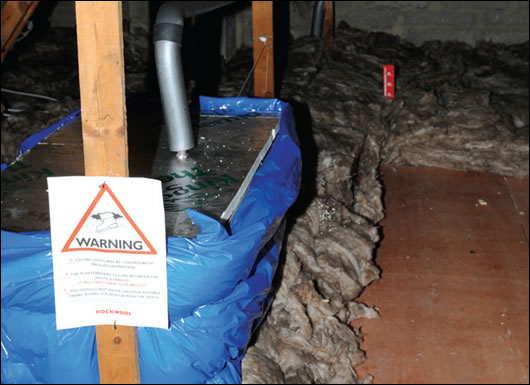
Most of the attic was insulated with 300mm of Knauf Earthwool, also creating an accessible storage area insulated with 100mm of Quinn-therm PIR board
Solid multi-fuel stoves installed under the scheme must have a gross efficiency of 75%. Each house must have at least two heating zones (space and water) as well as time and temperature control of the electric immersion, if one is present. TEA will also aim for houses to get a second space heating zone where possible, while thermostats and analogue time clocks must be installed for each zone.
The agency decided not to ask contractors to seal houses for airtightness. Kenny says the gradual retrofit of double glazing in social housing over the years has helped sort major air leaks around windows and doors, while pump-filling cavities will help cut leaks too. After that, he says many builders might not be familiar with the detailed work involved in further sealing – and the only way to prove sealing is effective is with a blower door test. "It's relatively hard to define what work is needed and how to cost that work in advance," he adds.
Of course, quality workmanship is just as crucial as a good specification. "We thought – we've written this great spec, how do we make it happen?" Kenny says. For a start, TEA is giving contractors interested in working under the scheme detailed training in the spec before local authorities tender for work – contractors who attend will be awarded points under the tendering process. By training all interested contractors rather than just the winning tenderers, TEA is aiming to improve the quality of workmanship locally – even for work done outside the scheme. Local authority representatives and BER assessors have attended the training too.
TEA also helped each local authority set up a panel of BER assessors for the scheme – the agency’s criteria selected assessors based on their BER assessors' exam score, their primary qualification, the level of their BER qualification, their experience in BER assessment, and of course cost.
TEA has set up a strict chain of quality control too: BER assessors will recommend measures necessary to get to a C1, the contractor will carry out the work and the assessor will then check to make sure everything meets the required energy performance standard. The local authority's clerk of works will check the quality of workmanship, and TEA will do spot checks too.
Show house
One contractor, Leetherm - who have both plumbing and insulation divisions – upgraded a house in Clonmel to TEA’s specification as a demonstration project. The company pumped the house’s cavities with Envirobead platinum plus insulation, boosting the U-value of the walls to 0.38 W/m2K. They also stripped out fibreglass in the attic and laid 300mm inches Knauf Earthwool insulation, also creating a separate accessible attic storage area insulated with 100mm of Quinn-therm PIR board – these areas have U-values of 0.11 W/m2K and 0.15 W/m2K respectively.
Leetherm installed a 90% efficient gas boiler with weather compensation too. A new hot water cylinder, three heating stoves and a solid multi-fuel stove were also fitted. Leetherm installed controllable ventilation covers throughout the house too, as most of the vents had been sealed up.
The upgrade pushed the house’s BER from 350 kWh/m2/yr to 141 kWh/m2/yr, an E2 to a B3. Maurice Murphy of energy assessors MITB – who did the BER assessment – says the house was comfortably hitting a C1, but the installation of the stove was a big enough improvement over the old open fireplace to get it to a B3. Based on the family’s previous consumption pattern and the occupancy of the house, Murphy estimates the upgrade will cut the family’s heating bills from €1,374 to €541, a saving of €833. He stresses, though, this is only an estimate.
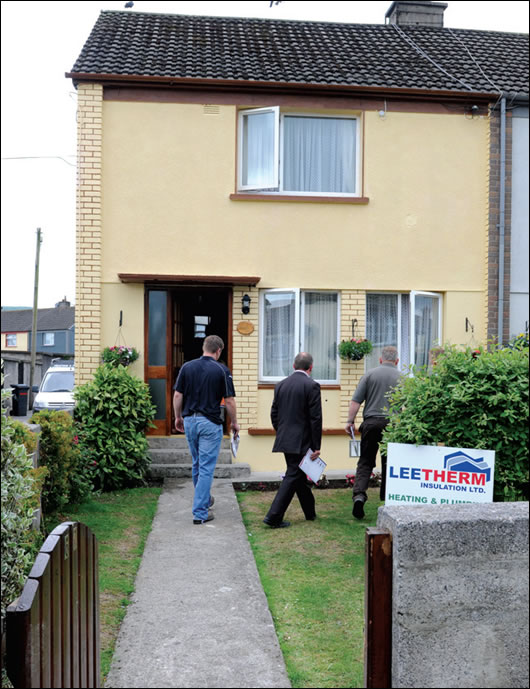
Contractor Leetherm upgraded a demonstration house to Tipperary Energy Agency's energy retrofit spec for local authority housing
“It was kind of an effort to show what could be achieved in one day’s work,” says Leetherm’s Ken Lee of the demonstration house. The bulk of the job was done in one day (though some of the heating work spilled over) even though the tenants were in the house at the time. Lee says that, as the relatively buoyant energy upgrade market attracts inexperienced and unscrupulous installers, he wanted a flagship project to demonstrate quality workmanship. He also wanted to show local authorities in the area that the average upgrade is “relatively pain free”.
"It was a brilliant idea," Paul Kenny says of the house. "They made sure it was upgraded to the spec and had us back twice to check it….A lot of detail and effort went into making sure it was right.”
Work under the scheme throughout much of Tipperary will now begin before the autumn. Kenny says one of TEA's main tasks has been talking to contractors and suppliers, discussing whether particular products and system meet TEA's specs and the building regulations. Manufacturers may say their product meets requirements, but Kenny says this isn't always the case. "What we have in Ireland at the moment is building regulations and technical specs that many people struggle to interpret,” he says.
Ideally contractors throughout the country would be able to pick up the phone and find out easily if a particular product or system complies with building regs or upgrade specs – but that's not the case, meaning much energy retrofit work is done without the same standard of advice being available as on this scheme. Similarly, much upgrade work is done without the strict quality control and local oversight that the energy agencies can provide. Kenny says: "That's what's needed for every house in the country.”
- Articles
- retrofit
- Social Capital
- energy upgrade
- Air leaks
- Energy Efficiency Measures
- Platinum bead
- Condensing oil boilder
- Enviromax
- Tipperary Energy Agency
Related items
-
 History repeating
History repeating -
Retrofit redux: Catching up with A3
-
The transformative power of industrialised retrofit
-
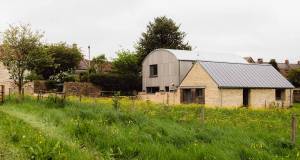 Derelict to dream home
Derelict to dream home -
Traditional homes retrofit grant pilot launched
-
 Dr. Barry Mc Carron appointed MD of KORE Retrofit
Dr. Barry Mc Carron appointed MD of KORE Retrofit -
 Bungalow Bills
Bungalow Bills -
New scheme offers up to €75,000 retrofit loans at low cost
-
EIB Group support new low-cost home energy upgrade scheme in Ireland
-
 Phit the bill
Phit the bill -
Mainstreaming retrofit – a massive missed opportunity
-
 It's a lovely house to live in now
It's a lovely house to live in now

